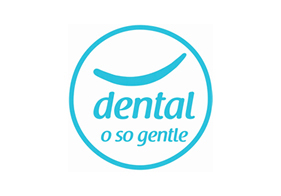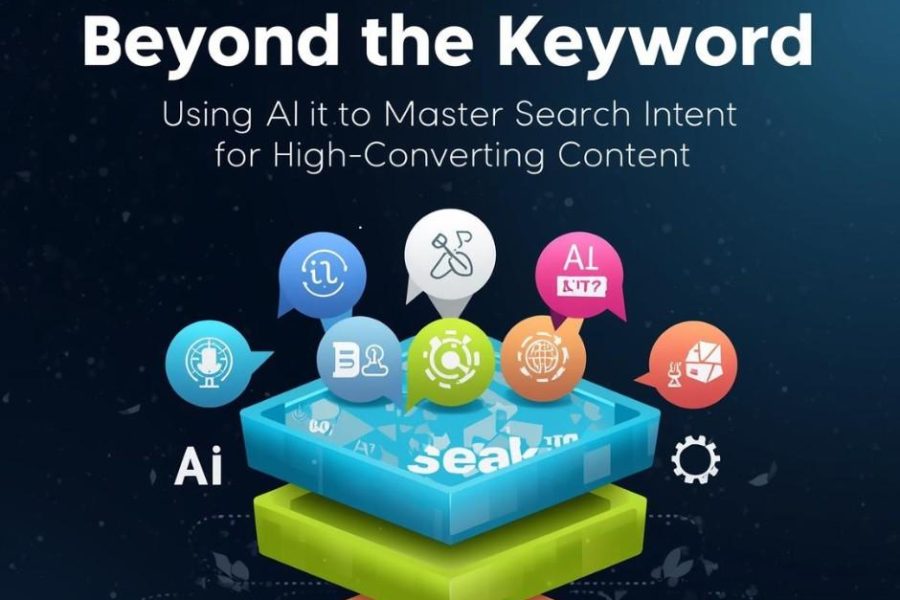You’re probably right if you’ve been thinking something isn’t quite right with your numbers, thinking that something is not correct. Quietly, Google AI Overviews have begun changing searches in Perth and everywhere else. It is only very recently that businesses have started to become aware of this.
You have spent years building up your organic rankings. You have paid for the first page or probably the top three spots for your main keywords, yet your traffic has dropped.
What is really happening here?
I will share possible solutions in this article. This has worked not only for our site but also for several clients in different niches, both local and international.
In 2024, Google first called it SGE (Search Generative Experience) and now brands it as AI Overviews. Instead of showing your website link at the top, Google now displays a helpful answer addressing the user’s query right there on the results page – through an AI-generated summary.
Here’s the stark reality. Your traffic will drop if they get their answers without having to click through to your site. Simple as that. Research by the Pew Research Centre found that click-through rates declined by nearly 47% when AI Overviews appeared in search results.
Some businesses report a 20–30% decline in organic traffic for queries that were previously top performers. For others, the impact is even more severe.
Is it fair? That probably does not need further elaboration. The question is, what are you going to do about it?
First Things First: Are You Actually Being Cannibalised?
Before you call your Perth digital marketing agency to complain, let’s make sure AI Overviews are actually the culprit.
The Diagnostic Checklist
Open Google search console and check the last six months of data. Look for queries where impressions remained stable but clicks fell. That’s where the problem lies.
Informational searches are the most heavily impacted—‘what is’, ‘how to’ and ‘why do’ questions sit at the heart of core targeting areas. One study found that problem-solving queries introduce AI Overviews in 74% of results, while for question-based searches they appear around 60% of the time.
Google shows AI Overviews most often for:
- Complex multi-source questions
- How-to queries with steps
- Comparison searches
- Definitions and explanations
If your top pages address these types of questions, they may be at risk.
The Numbers Don’t Lie (But They Can Be Tricky)
Open your analytics and segment by landing page. Sort for traffic decline over the last quarter against the same period last year. Factor in seasonality, obviously – do not freak out because your Christmas content is not getting clicks in June.
What you are looking for will be those pages that have performed well historically but suddenly dropped off without any apparent reason. There is no algorithm update that could potentially explain this decline. There is no possibility of a competitor suddenly outranking you. The decline could simply be a decrease in traffic.
Compare your CTRs from Search Console with industry benchmarks for your positions. If you’re ranking in position two but getting a CTR that looks more like position five or six, that’s AI Overviews eating your lunch.
Why Some Businesses Get Hit Harder Than Others
Not everyone’s feeling the pain equally. If you run an educational site, you are feeling the pain. Here’s what happened to recipe sites: AI Overviews pulls from that content and leaves the original source high and dry. They learnt their lesson the hard way.
Service businesses with how-to or troubleshooting content are most at risk. If your SEO strategy was based on using educational content as a top-of-funnel attraction, then yes—you’re one of those who will feel this change more than others.
Protected are the businesses that receive ‘near me’ searches and transaction queries on e-commerce sites. Google understands that individuals searching for “plumber near me” prefer to call a service provider rather than read an AI-generated summary.
Measuring the Real Impact (Without Losing Your Mind)
Okay, let’s get down to how you can actually put a number on this thing because “I feel like my traffic is down” does not work in any boardroom or with any client.
Set Up Proper Tracking
If you don’t have these in your Google Search Console, now is a good time to learn about them. Impressions: The total number of times any URL from your site appeared in search results viewed by a user,
Track the total impressions versus the total clicks over time. Plot this on a graph. You should look for the widening gap between these two lines. What does that widening gap represent? This represents potential traffic that is aware of you but is opting for alternative options instead.
Click-through rates vary by type of query. Group your queries into three categories: informational, navigational, and transactional. Watch how the click-through rate for each category trends over time. This will show you which part of your content strategy is most impacted.
Position changes vs traffic changes. This is the big one. If positions are stable or even improving while traffic continues to decline, there’s your answer.
The Before and After Analysis
Here’s a practical way to really see what’s going on. Pick your top 20 most important keywords.
For each one, record:
- Your current ranking position
- Your CTR for that keyword
- The search volume
- Whether AI Overviews appear for that query
Get a baseline of what’s happening right now so you can measure exactly how much the appearance of AI Overviews is impacting your actual traffic instead of just hypothetical traffic.
We’ve had Perth clients notice overall traffic is down 15%. Then they start drilling into specifics and find certain categories of queries are down 40% or more. The detail matters. It always does, particularly when you’re attempting to plan a response.
Winning Back Those Lost Clicks (Or Finding New Ones)
Let’s get over the doom and gloom. Besides complaining that Google is frustrating, let’s look at something practical we can do about it.
Strategy One: Get Better at What You Already Do
AI Overviews pull from existing search results. If your content is comprehensive and genuinely helpful, Google’s AI will likely reference it. Sites cited in AI Overviews often see brand recognition increase even if direct clicks decrease.
Make your content citation-worthy. Use structured data. Answer questions fully. Include statistics and expert quotes. Change the way you deliver SEO services – by ensuring that Artificial Intelligence uses your website as its source.
Strategy Two: Target Different Keywords
If informational queries are the ones gaining traffic, so be it. Adjust your focus. Transactional keywords, local searches, and long-tail commercial queries still get clicks because AI Overviews do not fully satisfy intent.
Work with a digital marketing team that understands search intent at a level where they can determine which keywords are “AI-proof” and which ones have been feeding Google for free.
Strategy Three: Own Your Brand
Branded searches are protected from AI Overview cannibalisation. Brand building matters more than ever. Social media marketing, email campaigns, and traditional advertising make your brand the one people search for directly.
Step Four: Diversify Your Traffic
It’s dangerous to depend on organic traffic now. Google Ads is also another option – yes, you will be paying for those clicks that used to come free through organic results but at least the clicks are coming.
Email marketing keeps you top of mind with previous visitors. The businesses best adapting to this change are not fighting against AI overviews – they have built systems in place that work no matter how Google chooses to display results.
Strategy Five: Create Content AI Can’t Replicate
AI Overviews struggles with original research, unique case studies, personal experiences, very recent news, local insights and multimedia content like videos and calculators.
If you’re regurgitating existing information, you’re competing with AI. While AI-generated content has its place in SEO strategies, the key is creating genuinely original value – something AI can reference but not replace.
The Uncomfortable Truth About Adaptation
Look, nobody in SEO likes admitting this but the rules have changed and they will continue changing.
What worked so well in 2020 may not work that well now. Google will continue to prioritise its own interests, and we must adapt accordingly.
Some businesses will stick with the old playbook and watch their traffic bleed out. Others will evolve and find new ways to thrive. Which group you end up in depends on how quickly you spot what’s happening and change course.
Changing course does not mean abandoning SEO entirely – organic search still drives massive value. But it does mean getting smarter about which aspects you invest in.
What This Means for Your Business Moving Forward
For now, please focus on these.
First, get actual data as to whether AI Overviews are affecting you. Measure it well. You cannot fix what has not been accurately diagnosed.
Second, audit your content strategy. Which ones are vulnerable? Which ones are protected? In which areas are you creating real value rather than simply contributing content to the AI system?
Third, diversify. If 80 percent of your traffic comes from organic searches, that’s a liability now. Build alternative channels and create content that’s hard for AI to summarise.
Fourth, consider if you need professional help. Having a digital agency working on these challenges across multiple clients means they’re seeing patterns and solutions you might not be seeing.
Here’s the Deal
AI Overviews are not going anywhere. Fighting them or denying they are a problem is a poor strategy.
What you can do is measure their impact accurately, understand your vulnerabilities, and adapt accordingly. Some clicks are truly gone. Others require different strategies to reclaim.
The businesses that will come out ahead are not the ones complaining about Google. They’re the ones who saw the change and actually did something about it.
Where does your business sit right now? Have you ensured that this is being measured accurately? Do you know which pages are affected and by how much? Do you have a plan in place, or are you anticipating that things will return to normal on their own?
Here’s the part nobody wants to admit: This is normal now. What are you going to do about it?
If you’re feeling overwhelmed and uncertain about where to begin, perhaps it’s time to engage in a discussion with an experienced professional who has successfully navigated similar challenges for numerous clients. Getting some expert eyes on your specific situation might be the difference between losing ground and actually adapting successfully.



























